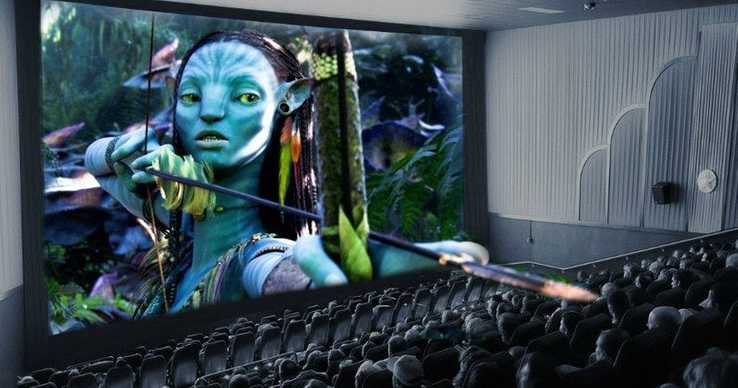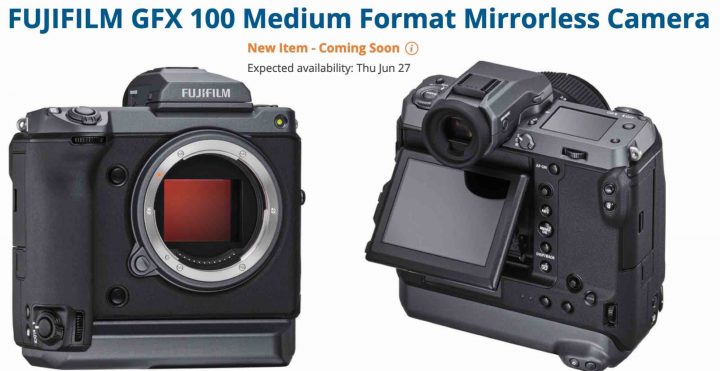LOS ANGELES (May 29, 2019) – Panavision, the world-class provider of end-to-end solutions, will return to Cine Gear Expo (May 31-June 1) at The Studios at Paramount to showcase the latest innovations in the company’s ever-expanding production and post production ecosystem. Panavision, Light Iron and LEE Filters will display an array of integrated technologies and systems at booth S408 on Stage 3 – ranging from lenses, cameras and filters, to state-of-the-art production and post production workflows – that illustrate Panavision’s commitment to providing the most versatile and powerful storytelling tools.
“At Panavision, our vision is to support filmmakers with solutions that expand creativity and efficiency,” says Kim Snyder, president and CEO of Panavision. “We’re always focused on adapting the tremendous power of technology to the needs of the visual artist. We’re proud and excited to demonstrate our latest advancements.”
Among the breakthroughs on display are Panavision and Light Iron’s new LINK HDR system. Creatives are producing for HDR-capable distribution platforms more than ever before as consumers seek premium viewing experiences. LINK HDR was developed to address the challenge of viewing HDR (high dynamic range) images throughout the production and post production process. Offering HDR and SDR viewing options in tandem, LINK HDR provides cinematographers, directors, editors and creative talent throughout the imaging chain the ability to view their image at the same quality delivered to consumers.
The LINK HDR system consists of:
Panavision LINK HDR On-Set Cart – a modular cart outfitted with various monitoring configurations that offers creatives the ability to view HDR and SDR live from the camera.
Light Iron LINK HDR Dailies – an NLE process that creates HDR and SDR deliverables simultaneously, which allows editors to cut, toggle between, and export in either format.
Light Iron LINK HDR Finish – a combination of creative talent, technical expertise, and leading technologies that link the creative decisions made on-set to the HDR mastering process for delivery to various HDR platforms.
“As adoption rates of the HDR format rapidly grow, it is more critical than ever for creatives to view a consistent image from on-set through the finishing suite,” notes Light Iron Supervising Colorist Ian Vertovec. “We want filmmakers to have all the tools they need for this new deliverable. The components of LINK HDR were designed with them in mind.”
Panavision’s Millennium DXL2 and DXL-M camera systems will also be showcased at the Panavision booth, demonstrating the value of this expanding ecosystem. With new industry developments, the DXL2’s 6G 4K SDI outputs, which allow direct connection to a Teradek Bolt 4K with a single SDI cable, can now be fully utilized. The latest enhancements to the DXL2 also include: an integrated C-Motion F.I.Z. module allowing the use of Arri WCU4 wireless lens control handsets with full lens mapping support; a proxy workflow that allows easy creation of traditional dailies while archiving 8K files for DI and VFX; a wireless audio module adding expanded audio capabilities; and DXL Control for iPhone and Android.
The DXL-M, which marries the modularity and connectivity of the DXL with the smaller size and weight of RED’s DSMC2 cameras, is now available to filmmakers. In addition to the Primo HDR viewfinder, DXL menu system and LiColor2, the DXL-M now offers 2×2 SDI outputs delivering two independent monitoring paths across 4x HD-SDI outputs. Along with added accessories, battery elevator and control upgrades, these advancements add to the efficiency and flexibility of the kit. The result is a fully-equipped camera that is conveniently adaptable to any shooting scenario, including drone, remote head shots and situations where space is at a premium.
Panavision’s LCND, a variable liquid crystal neutral density filtration system, will be presented with expanded new features. LCND is now wirelessly controllable via the Preston handset and offers functionality that translates to creativity on the set. The ability to maintain a given stop under changing lighting conditions by riding the ND filter instead of the iris adds powerful image control options at the moment of photography. LCND also has manual controls and a 24-hour internal battery built into the single filter tray.
Panavision’s longstanding emphasis on delivering superior lens quality and unmatched selection continues to be a priority as it serves the artistic needs of today’s creative community. At Cine Gear, filmmakers can examine the company’s proprietary portfolio of optics, including the Primo-X (weatherproof and compact drone and gimbal solution), Panaspeed (large format, high-speed T1.4 with the classic Primo look), H-Series (vintage portrait look for spherical large format), and UltraVista (1.65x large-format anamorphic) lines, as well as other lenses in Panavision’s large-format offerings.
In addition to exhibiting, Panavision, in partnership with RED Digital Cinema, will present a panel featuring Oscar®-nominated cinematographer John Schwartzman, ASC. Panavision’s SVP of Optics Dan Sasaki will join Schwartzman as he discusses his approach to visual storytelling and explores the fusion between visual concepts and tools. Schwartzman will reveal his decision-making process from pre-production to post on such projects as The Highwaymen and the upcoming Last Christmas, on June 1 at 11:45 a.m. in the Sherry Lansing Theater.
LEE Filters will highlight the LEE100, a newly updated 100mm filter mount system that boasts lighter weight and improved performance. The LEE100 Filter System incorporates a rotation lock as well as a newly designed clip-on polarizer filter for ease of use. Additionally, LEE’s full collection of lighting gels, including the expanded range of Zircon gels specifically designed for fine-tuning LED fixtures, will be touted, as well as the ProGlass CINE IRND range of neutral-density filters, precisely built to meet the exacting needs of cinematographers.
“The advancements on display at Cine Gear exemplify our commitment to providing end-to-end solutions that put creative flexibility in the hands of filmmakers,” says Snyder. “Each tool is conceived as an element of a unified ecosystem designed to deliver customizable solutions to meet any need or budget. We’re looking forward to the opportunity to present the results to our friends and colleagues in the filmmaking community, and we can’t wait to see how they’re used in the visual storytelling of tomorrow.”
————————————
Avatar 2 Will Revolutionize 3D Claims James Cameron

Avatar Sequels Will Cost More Than $1 Billion to Make
![]()
The day has finally come when you can quit wondering whether or not you’ll actually see Avatar 2 happen. James Cameron, after years of false starts and promises, has finally started filming his Avatar sequels. All four of them, which are going to shoot consecutively and be released over the course of the next eight years. So how much is this grand production going to cost? More than $1 billion.
As reported by Deadline, James Cameron is making history with this production by becoming the first director to ever shoot four blockbuster-budget movies consecutively. Peter Jackson famously shot all three Lord of the Rings movies at the same time, with extensive re shoots in between, but these Avatar sequels are even larger in scope. And as such, they come with a very hefty price tag attached. Deadline couldn’t provide an exact figure, and there probably isn’t one to be had, but they do say that the movies have a “collective budget expected to surpass $1 billion.”
Fox produced the first Avatar and is on the hook for Avatar 2, 3, Avatar 4 and Avatar 5 (none of which are official titles at this point). The financing situation is probably quite complex, but ultimately, someone has to put that money up and hope that these movies can do even a fraction of what the first movie was able to. Considering that they are also going to have to spend a ton of money to market all four of these sequels, and reshoots will almost certainly be necessary, this is quite the risky investment. To some degree. But James Cameron is one of the most bankable directors to ever make a movie, so if anyone can pull it off, it’s him
FujiFilm just reset the bar for MF cameras.
—————————————————————————————–
A collection of 3D films, 3D movies and 3D pictures updated daily.
A collection of “3D Movies You Can Touch!” ®. All Rights Reserved. Copyright © The 3D Film Company and Ted Amaradidis. For rights please read bellow.
This material is protected by copyright and has been copied by and solely for the advertising purposes of 3dmovies.com Inc. under license. You may not sell, alter or further reproduce or distribute any part of this coursepack/material to any other person. Where provided to you in electronic format, you may only print from it for your own private study and research. Failure to comply with the terms of this warning may expose you to legal action for copyright infringement and/or disciplinary action by 3dmovies.com Inc. For rights to use any of our pictures, video clips or movies please use our contact form. Most pictures are 6k resolution and almost all of our movies are filmed in 6k resolution soon to be upgraded to 8k.







